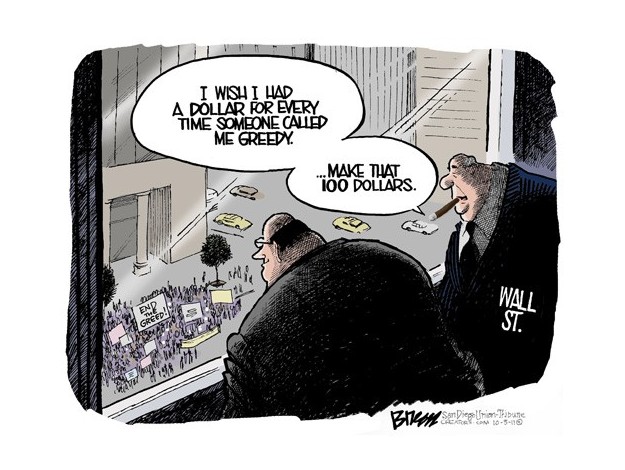Mariyanthie Linaris
It would be inaccurate to say that we are not all confined by the definitions of class all around us; class structures constrict almost every aspect of our lives, from whom we associate with, who we marry, where we go. The list goes on. And all of this is especially prominent living in New York. We see every class division from the population below the poverty line, the struggling lower class, the stable middle class, and the flourishing upper class.
For those who might not be so exposed to the wide range of social divisions, art is a huge part in passing along information. Art can either perpetuate class stereotypes or break the mold and offer a different perspective. This is not a new concept; film and theater have been influencing the population for years. Personally, I remember watching My Fair Lady at a very young age and gathering from it that the rich and poor will never be on an even playing field, that the poor are basically a game to be bet on. Then I saw Annie Get Your Gun, where Annie Oakley, a dirty girl who is just “doin’ what comes naturally,” wins over the hearts of the high society people and makes a name for herself despite her financial status. Clearly, different works portray classism in different ways.
Take Oliver Stone’s Wall Street, for instance. The film follows Bud Fox on his journey to become a successful stockbroker. The film enables classic stereotypes of the upper and middle classes. Through the morally ambiguous actions of Gordon Gekko, Bud’s “role model,” Stone perpetuates the stereotype that the rich lie and cheat their way up the social and economic ladder. The middle class is represented through Bud’s father, Carl Fox, a hard working blue-collar worker who encourages his son to do the morally right thing. The film’s representation of the middle class enables the population to believe that all middle class people are honest, hard working people who look out for each other.
Now compare Stone’s film with Taxi Driver, directed by Martin Scorsese. Taxi Driver follows Travis Bickle, an insomnia ridden former United States Marine turned late night taxi driver. Clearly, this film paints a very (very) different picture of the lower/middle class. With all the robberies and prostitution and all that good stuff, Scorsese translates the idea that the lower class people are definitely not always the honest, hard working people we like to believe they are; instead, we are left with the idea that these people will do anything for money, regardless of the social norms of right and wrong. But wait, I thought that was just for the wealthy upper class people (according to Oliver Stone)? Apparently not. While Stone perpetuated the stereotypes of the upper and lower classes, Scorsese rebelled against them, proving that no one, upper class or lower class, is above lying and cheating your way to a pay day.
God of Carnage, by Yasmina Resa, was pretty wild from start to finish. The play centers around Veronique and Michael Reille and Annette and Alain Vallon, two sets of parents in France who attempt (strong emphasis on attempt) to discuss their sons’ altercation. Both couples seem to be higher-class people. The discussion starts calmly, but quickly takes a sharp turn to borderline violent. People are vomiting all over the place, cell phones receive a watery grave, wives attack their husbands, and the matter of a toothless boy with a swollen lip remains unaddressed. In my mind, I thought these high society people would calmly discuss the issue over some wine and cheese perhaps, but their behavior deteriorates to that of three year olds fighting over the last red crayon in the supplies basket. God of Carnage makes its audience realize that high society people are not always as put together as we may believe they are and can actually fight dirty.
Clearly, different windows offer different views inside, but we cannot rely on one window to give us the clearest, fullest view.

PS: Why does this website act like everything is being posted like four hours ahead? It is 11:47pm, not 3:47am, eportfolios.







 on dollar condo that had a beautiful view, as well as his crowded cubicle in comparison to the rich businessman Gordon Gekko’s spacious and beautiful office. Just when you think Stone couldn’t make his view any more clear, he adds a scene where a man in a suit and tie is standing next to a homeless man. Stone’s film very obviously emphasizes class structure, and his choice of making the rich guy a villain and Bud’s father Carl, an old caring father who works hard in his blue collar job, the middle class man, appeals to a middle class audience, and greater reinforces the idea driven into our minds as children when we watched Robin Hood over and over again.
on dollar condo that had a beautiful view, as well as his crowded cubicle in comparison to the rich businessman Gordon Gekko’s spacious and beautiful office. Just when you think Stone couldn’t make his view any more clear, he adds a scene where a man in a suit and tie is standing next to a homeless man. Stone’s film very obviously emphasizes class structure, and his choice of making the rich guy a villain and Bud’s father Carl, an old caring father who works hard in his blue collar job, the middle class man, appeals to a middle class audience, and greater reinforces the idea driven into our minds as children when we watched Robin Hood over and over again.